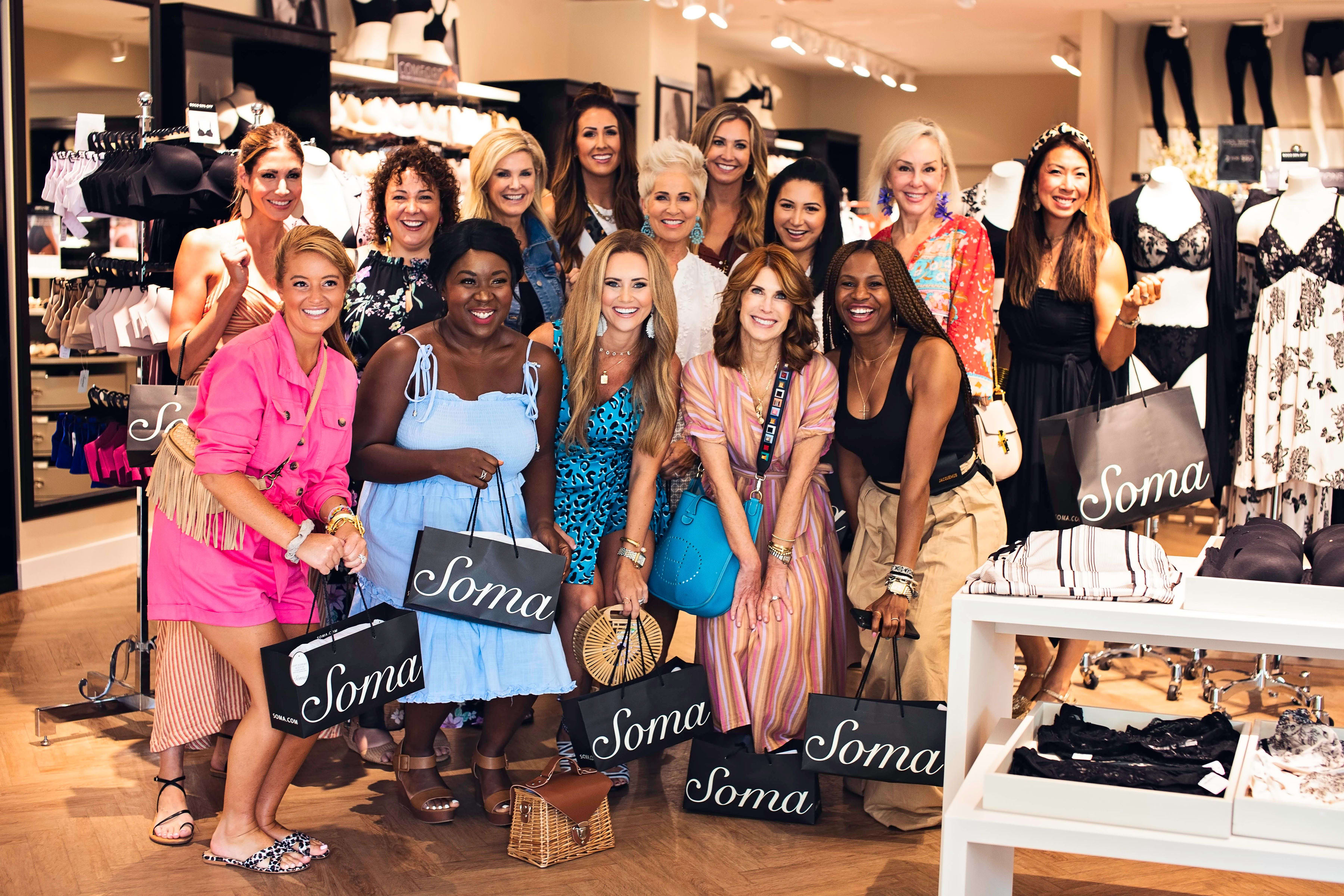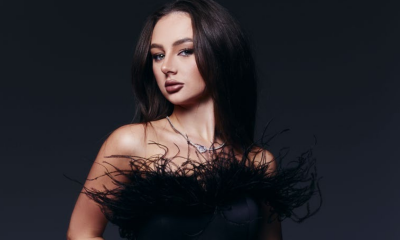SOCIAL MEDIA NEWS
Instagram influencers are often white, leading to brand criticism
A Soma influencer event.
Tracey Caruthers, The Trace Media
Last week, a clothing chain called Altar’d State posted from a “blogger adventure” it hosted in Denver with a group of Instagram influencers clad in the faith-based brand’s flowy cardigans, skinny jeans and faux-snakeskin boots.
The colors of sweaters were varied. But when it came to the clothing models, things looked pretty one note. With the exception of one brunette, each of the influencers — or users who work with brands to promote services or products — was blond.
Once the brand started posting about the trip, the reaction was swift.
“There’s something missing in this photo,” one commenter mused. “Diversity. Have ya heard of it?”
An Instagram post from clothing brand Altar’d State.
Megan Graham
Another wrote: “Why is your Instagram account all skinny white girls? This is 2019, there is a lot more diverse girls out there who needs to be seen. I like your stuff. But this is not OK. Wish there were more diversity in your marketing.”
The Tennessee-based brand, which has about 300,000 followers on its Instagram page, didn’t respond to multiple requests for comment from CNBC. But it did respond to comments on its Instagram posts saying the company hoped this was the first of many influencer events and wanted to hear from its commenters about who influences them “to make sure we reach out to everyone that has a giving heart and a beautiful soul.”
Altar’d State is indicative of a larger trend of big and small brands being called out on social media — especially Instagram — for not considering diversity in its picks of influencers, especially on the “influencer trips” that take groups of individuals on vacations to hawk their wares on a far-flung beach or to pose around a campsite wearing their clothes.
And that kind of content may soon be more visible than ever, as Facebook-owned Instagram rolls out a change letting advertisers promote posts from influencers. This widens the reach of those “branded” posts beyond just an influencer’s own following.
Meanwhile, influencer marketing dollars are surging to new heights. Global influencer marketing is expected to be an $8.5 billion market this year, according to a recent report from Cheq, a cybersecurity company focused on the digital media space. But diversity advocates and other onlookers question both the social and business consequences of hiring only thin, white, able-bodied, 20-something influencers. As some brands continue to cast people who look the same way, some customers warn they are becoming less interested in buying from businesses that don’t appear to care about diversity.
Blogger Stephanie Yeboah wrote for Metro UK earlier this year about the “blatant sidelining and absence of women of color” in the influencer agency space.
“By exclusively using white influencers to tout holiday experiences, beauty and skincare products and fashion pieces, the story being told is that these experiences are only available to white people,” she wrote. “Only white women use luxury skincare. Only white, slim women go on holiday. Only white women wear a certain brand’s fashion pieces. It needs to stop.”
Losing patience
Earlier this summer, Washington-based influencer and blogger Alicia Tenise Chew fired off a tweet.
“Black influencers are rarely ever invited on influencer trips,” she wrote on June 20. “I’ve started screenshotting every press trip I’ve seen over the last month and the lack of diversity is so upsetting (but not surprising).”
Four photos attached to the tweet displayed groups of women shilling for a wide variety of brands, including clothing brand Sail to Sable, footwear company Jack Rogers, furniture and decor company Serena & Lily, a tourism group for Napa Valley and clothing and accessory brand Amaryllis Apparel.
The overwhelming majority of the women included in the photos appeared to be white.
Amaryllis Apparel and Jack Rogers didn’t respond to a request for comment, and Sail to Sable didn’t provide a comment as of press time. Visit Napa Valley and Serena & Lily said in a statement that the organizations value inclusiveness and “invite and host influencers from all backgrounds.”
Tenise continued in another tweet that her missive wasn’t meant to be a jab at influencers going on those trips, but a message for the companies hosting them and inviting the influencers.
“Black households have trillions in spending power,” she wrote. “And you’re ignoring the market.”
Tenise pointed to a Nielsen report that indicated while African American people make up 14% of the U.S. population, they represent roughly $1.2 trillion in purchases annually. But even so, she told CNBC in an interview that many brands don’t think about including people of color in their events and influencer trips as much as they should.
Tenise sees a few reasons for this. She said at marketing firms she interacts with, she sees higher up positions predominantly held by white women. People of color often aren’t advancing to these roles and having a say, she said. The people holding the reins of running influencer campaigns may be well-intentioned, but they don’t realize they have a bias, she said.
It could also come from brands seeking to reach only the people it thinks will be interested in a product.
Ryan Berger, partner at influencer marketing platform Hypr, said when it comes to tapping influencers to work with, brands are still focused on the number of followers an influencer has, along with engagement levels and how much they’ll be posting on behalf of the brand.
He said his company, which runs a data platform on influencers for brands and agencies, typically advises that a company finds micro-influencers who can serve as a base, add in one or two “big names,” then add one or two “amplifiers” who may have much smaller followings but who have an audience that is passionate about a given topic.
Sail to Sable influencer trip from June.
Megan Graham
Maya Kelley, an influencer who previously worked at a PR agency on influencer marketing, has also seen this. Kelley would help brands cast for influencer trips if they were launching a new product and wanted to get the word out, for example. She recalls a trip where a client mentioned they wanted diversity, and Kelley said she carefully selected a group of 20 influencers from different backgrounds who also met the client’s objectives. Kelley did not name the company because she signed a non-disclosure agreement.
She said the client ended up casting white men and women, with a “diversity pick” of an Asian woman. She doesn’t think this is all done consciously, she said.
“I think there’s a certain type of ‘model minority,'” she said. “Maybe the client wanted to check off a box. … It’s not really true inclusion. It’s kind of [checking] off a box … so there’s not pushback.”
Kelley said she does feel some brands are starting to make progress. For the moment, she said some of the hires feel “a little forced” in terms of how that particular influencer is featured or shown, or might have lighter skin or more racially ambiguous features.
Tenise also said brands predominantly feature people who represent a Western standard of beauty, meaning they have lighter skin and aren’t heavier than a size 4 or 6. But of course, reality extends beyond that aesthetic.
“I have darker skin,” she said. “If I can’t realistically see the garment being worn on somebody of my skin type, sometimes I just don’t buy it.”
Some brands are becoming more aware of this, she said. Madewell, for example, lets shoppers browse what an item looks like on a variety of sizes. This is a game-changer for Tenise.
“I’m a size 6. I can see a size 6. I love it,” she said. “I can see myself in this product, on me and my curves.”
Tenise said she’s stopped shopping at some retailers that aren’t trying to be inclusive.
Kelley said other consumers are getting there as well.
“As long as consumers are holding brands to task in terms of including more people from different backgrounds on their press trips, I think it will start to happen,” Kelley said. “People are more vocal about when brands are dropping foundation lines with limited shade ranges. People are more aware, and that’s a good thing. Brands will have no choice but to make real change and not just pay lip service.”
Katie Boue, who refers to herself as an outdoor advocate and freelance writer, said every time she’s invited on a media trip, she expresses her excitement but also asks to see who else is on the roster. She said she was once asked on a trip by a brand and said since she was Cuban and queer, she checked its “diversity box.” She did not name the brand to maintain professional relationships.
Though she is Cuban and queer, “There’s nothing about me that looks diverse in any way, shape or form,” she said. Instead, she sent them a diverse list of people who could take her place. The company didn’t choose any of them, she said.
But Boue said she is starting to see a change.
A photo from REI’s Instagram page.
Megan Graham
“I think the outdoor industry is really stepping up,” she said. “A lot of it is driven by consumer market research, [which is] showing people within the next 20 years, the demographic of people who are spending money on outdoor gear is not going to be white folks, it’s going to be diverse.”
A 2020 forecast from the Outdoor Industry Association a few years ago, for example, noted the U.S. Hispanic community’s rapid population growth, and said that population powerfully influences mainstream culture.
Boue has also seen consumer backlash create real change.
The sporting goods store REI, for example, “did an excellent job of hearing the criticisms,” and hearing where they had blind spots, then “responding in a way that wasn’t just tokenizing,” she said. She said the brand now chooses diversity in terms of color, body shape, gender, ability and more. Boue has worked with REI as a model and writer.
“They’re definitely a model for the industry,” she said.
Doing it the right way
Beauty content creator and entrepreneur Arshia Moorjani, who has hundreds of thousands of followers on various social platforms, said one brand that is thinking about diversity in its influencer campaigns is Japanese beauty brand Shiseido. She said she took a trip with the brand earlier this month to Chile for the launch of a new line with more shades for different skin tones.
“They’ve had such a small shade range in their past launches, but now they’re expanding,” she said. “They’re now starting to cater to all.”
Photo of a Shiseido trip.
Megan Graham
And earlier this month, undergarment company Soma hosted its first influencer trip, not to an exotic beach but to its offices in Florida.
Atop of photo ops, the diverse group of influencers came together to talk to the company about new launches, what they’re seeing and hearing from their own audiences and more.
The company’s VP of marketing, Cristina Ceresoli, said Soma tries to be mindful of age, shape, style, ethnicity and other factors as it chooses influencers to work with. It also looks at an influencer’s audience, choosing a mix of individuals who are customers, store associates, nano influencers and macro influencers.
Soma has ramped up its influencer spending in 2019 by 50% over 2018, Ceresoli said.
“We would expect growth at that rate or potentially even larger in 2020,” she said. “This is not an, ‘OK, we’re on a path.’ We expect it to get bigger and bigger.”
That kind of marketing is giving Soma a more direct line to how different audiences are viewing a product or what they’re looking for.
“We absolutely know that when there’s a social post out there or an influencer post out there, that’s getting a strong reaction from either influencer followers and or customers, that is a strong directional signal that product is going to be strong,” Ceresoli said. “That’s an absolute linkage.”
Because as it goes for product posts or social media influence in general, brands will hear back fast: “They have an immediate feedback loop.”











